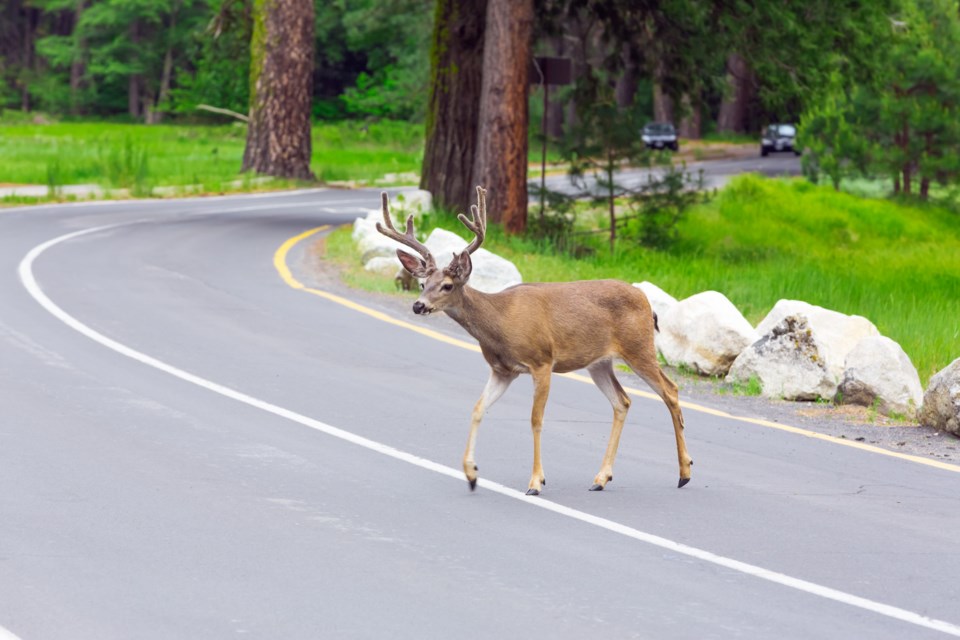Greater Sudbury Police are reporting a spike in collisions involving motor vehicles and wildlife on area roads.
During the month of June alone, the GSPS received nine reports of collisions with wildlife.
"Collisions involving wildlife can cause serious vehicle damage, personal injury, or death," said GSPS in a tweet.
According to Workplace Safety North statistics from 2017, there is a motor-vehicle collision involving a wild animal every 38 minutes, and one out of every 17 motor vehicle collisions involves a wild animal.
How you can reduce your risk of collision with wildlife:
Hopefully, you’ve never experienced that heart-stopping moment when a deer suddenly leaps in front of your vehicle, but if it ever does, what do you do?
Here are suggestions from the Wildlife Collision Prevention Program:
1. Watch for the signs: A Wildlife Warning Sign is a yellow diamond shaped sign. The sign warns of a hazard ahead, and advises drivers to be cautious. The sign does not require you to slow down, unless there is an adjacent speed limit sign posted as well.
2. Reduce speed: Experienced drivers know that if you’re going too fast, your ability to react and steer away from objects on the road is severely compromised. Speeding also means you need to cover more distance to come to a full stop and, in the event of a collision, greatly increases the force of impact.
3. Think: “What if...?” Think about and predict what you might do if an animal suddenly darted out in front of you or ran towards your vehicle. It’s better to mentally rehearse how you might avoid an encounter with wildlife, than have to react to a dangerous situation when you’re unprepared.
4. Drive defensively: Drivers and passengers should actively watch for wildlife - on the road, in the ditch, on the shoulder, and in the right of way; watch for any movement along the sides of the road. Shining eyes mean your headlights are reflecting off the animal’s eyes, however it’s important to note that moose are so tall that their eyes are normally above the beams of most vehicle headlights, and so are less likely to reflect the light.
5. Steer clear: To swerve or not to swerve? If smaller animals such as deer are in your way – think carefully – is it safe to swerve? Do not take unsafe evasive actions. Serious incidents can occur when drivers lose control of their vehicles trying to avoid an animal. Always reduce your speed in signed areas.
